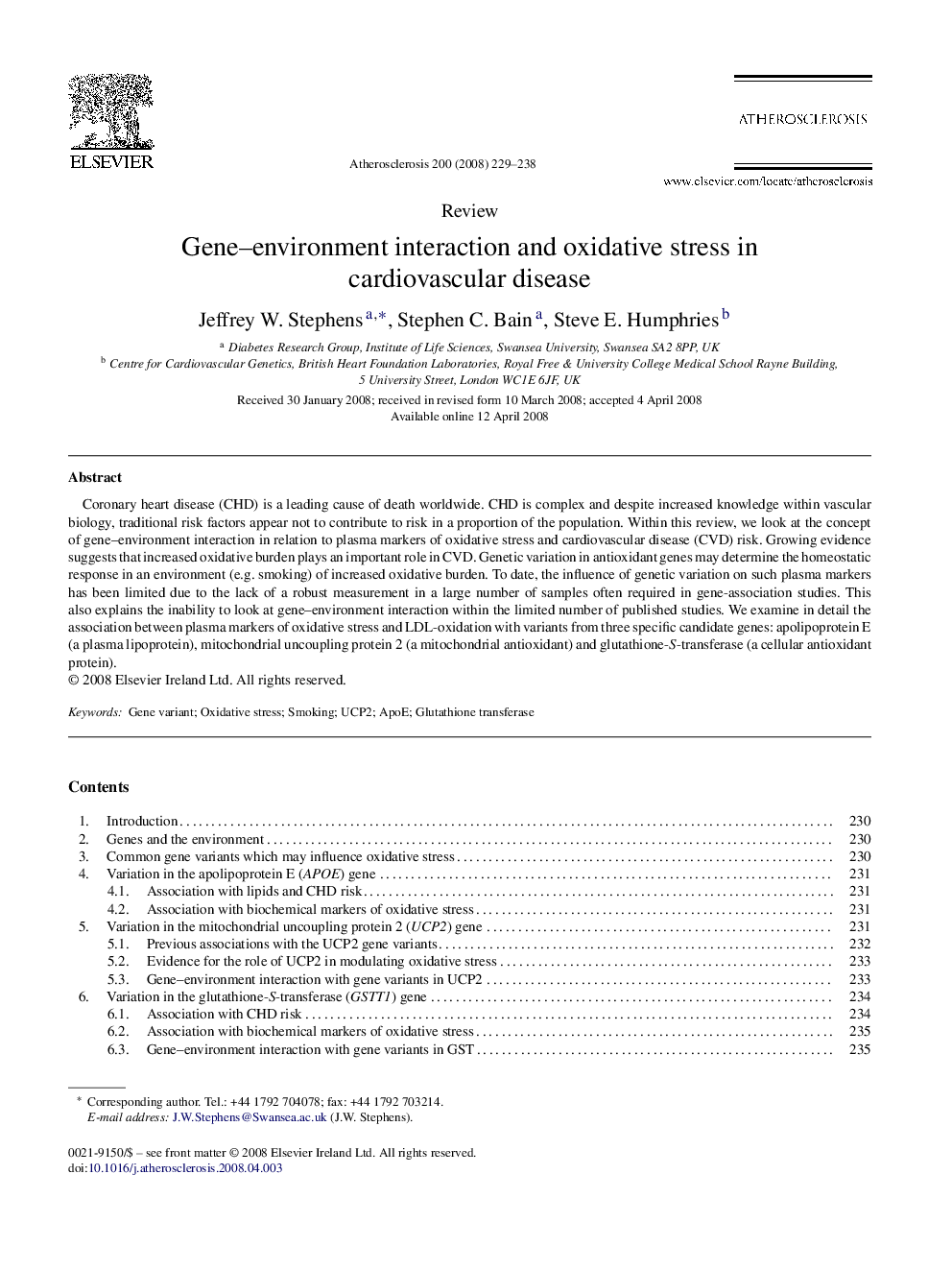| کد مقاله | کد نشریه | سال انتشار | مقاله انگلیسی | نسخه تمام متن |
|---|---|---|---|---|
| 2894559 | 1574726 | 2008 | 10 صفحه PDF | دانلود رایگان |

Coronary heart disease (CHD) is a leading cause of death worldwide. CHD is complex and despite increased knowledge within vascular biology, traditional risk factors appear not to contribute to risk in a proportion of the population. Within this review, we look at the concept of gene–environment interaction in relation to plasma markers of oxidative stress and cardiovascular disease (CVD) risk. Growing evidence suggests that increased oxidative burden plays an important role in CVD. Genetic variation in antioxidant genes may determine the homeostatic response in an environment (e.g. smoking) of increased oxidative burden. To date, the influence of genetic variation on such plasma markers has been limited due to the lack of a robust measurement in a large number of samples often required in gene-association studies. This also explains the inability to look at gene–environment interaction within the limited number of published studies. We examine in detail the association between plasma markers of oxidative stress and LDL-oxidation with variants from three specific candidate genes: apolipoprotein E (a plasma lipoprotein), mitochondrial uncoupling protein 2 (a mitochondrial antioxidant) and glutathione-S-transferase (a cellular antioxidant protein).
Journal: Atherosclerosis - Volume 200, Issue 2, October 2008, Pages 229–238